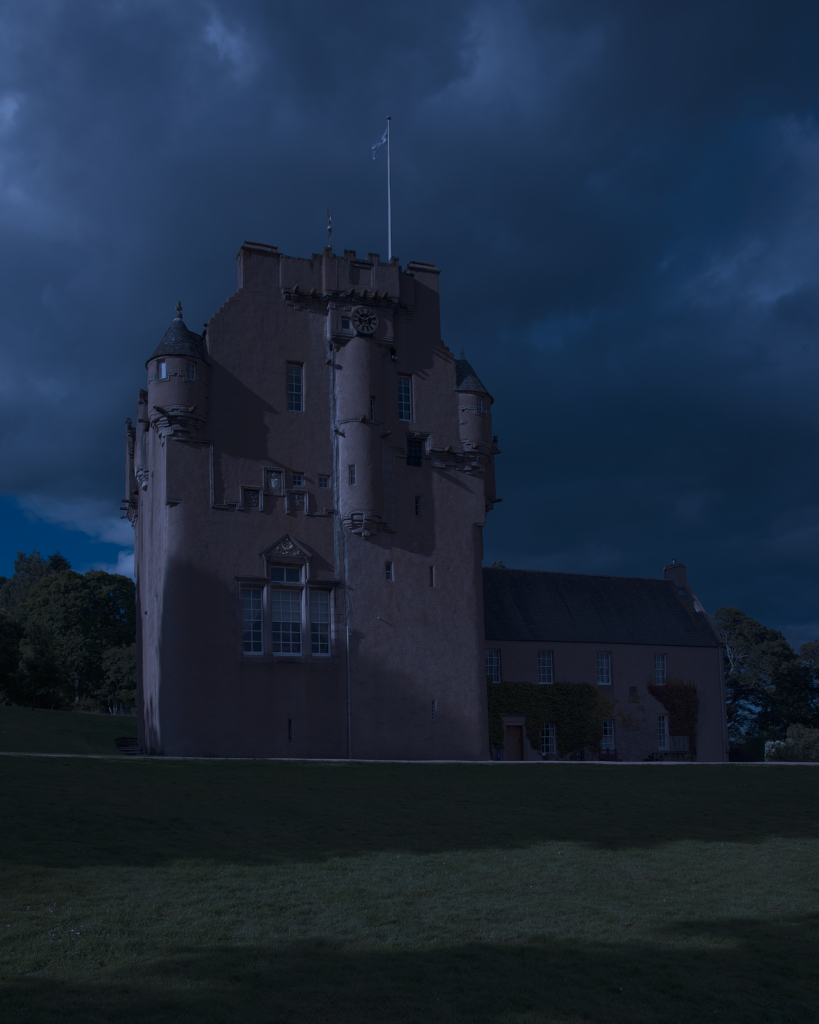Scotland is a country known for its majestic castles. With a history that dates way back, people lived in Scotland for at least 8,500 years before Britain’s history records started. It is one of the oldest countries and Europe and with that comes a lot of history and ghost stories! The castles of Scotland have seen more life, death, and tragedy than any building in North America. So it’s no wonder they have a few hauntings. Almost every castle in Scotland has a ghost story or two or more from over the centuries. These are some of the most haunted castles in Scotland which also makes them my favourites!
Crathes Castle, Banchory

There are many sightings of a Green Lady in Scottish castles. No one would know if it’s the same Green Lady or not. A popular sighting tends to be Crathes Castle, where many people have been said to have seen a green lady cradling a baby. When Crathes Castle was renovated in the 1800s, there were some children’s bones found beneath the fireplace in the room that has long been known as the Green Lady’s room. Who these belong to has never been discovered. One theory about the Green Lady is that she has come from an incident where Lady Agnes, widow of the Laird, was an overbearing, obsessive mother to her son, Alexander. When he grew and formed a relationship with a common young lady named Bertha, Lady Agnes was not happy with the idea of sharing her son with this young woman. When Alexander was away on a long journey, Lady Agnes decided to poison Bertha. Alexander returned to the news that she had passed away.
In an effort to comfort him, Lady Agnes prepared him a meal. However, when he reached for a goblet, she snatched it away, realising that this was the same goblet that had held the poison she used to kill Bertha. Alexander was furious with his mother.
When Bertha’s parents arrived to collect her remains, Lady Agnes was screaming “She comes! She comes!” and was struck dead within minutes.
However, the Green Lady has never been identified as either Agnes or Bertha. Some say that Bertha herself has been sighted on the anniversary of her death. Some believe that the Green Lady is the ghost of a servant who disappeared after getting pregnant.
Falkland Palace, Fife

Before Falkland Palace was constructed, it was a hunting lodge. When it was expanded, it was owned by The Earls of Fife – Clan MacDuff.
Falkland Palace was apparently loved by Mary Queen of Scots, and some have claimed to have seen her ghost around there. It is said that if you stare through a window in the Queen’s bedroom, you’ll see a sinister face staring back at you.
There is also the ghost of the White Lady, who will disappear through a wall once she catches you staring at her.
Another ghost has been sighted in the Tapestry Gallery, known as the Grey Lady and she can be seen anxiously pacing. It is said that her lover left for battle and never returned, but to this day, she is still waiting.
Several staff members have reported seeing the Grey Lady. One of whom – a gardener- has reported seeing her wandering around the drive of the castle. Another experience from the same staff member was when she and a friend were in Lord Bute’s room. While they had reason to be in there, they found that they felt uncomfortable, as though they were intruders.
Edinburgh Castle, Edinburgh

Edinburgh Castle is said to be one of the most haunted places in Scotland. Many of the former prisoners are said to haunt the dungeons to this day. One unfortunate prisoner had chosen to hide in a dung barrel, thinking that the barrow would be wheeled down the Royal Mile and he could escape. However, he had not considered how the dung was disposed of and he was thrown down the slopes of the castle to his death. Many visitors claim to experience a feeling that someone is trying to push them, accompanied by an unpleasant smell.
There is also the ghost of the piper boy. This dates back several centuries to when there were tunnels found under the castle. The entrance was so small, that the piper boy was the only one who could fit. He was instructed to investigate where the tunnels lead, but to play his bagpipes as he travelled, so that everyone knew where he was. As he wandered the tunnels, multiple people were listening for the sounds of his bagpipes, but the sound of piping stopped somewhere near Tron Kirk, a church on the Royal Mile. There were several attempts to find the boy, but there was never any trace of him. The city council ordered the tunnel to be sealed, but late at night, some people still say that they hear the sound of a single bagpipe playing from beneath their feet.
A headless drummer was seen shortly before Oliver Cromwell attacked the castle in 1650. While the sightings are rare, often people claim to hear the sounds of drums inside the castle. It is said that his appearance would come as a warning when the castle was about to come under attack. No one knows who the ghost may be, or how he died, but a common belief is that he was beheaded.
Janet Douglas, Lady of Glamis is the tragic woman who was accused of trying to poison the king and of practising witchcraft. In 1537, she was burned at the stake, while her 16-year-old son watched. She was one of thousands of victims of Scotland’s witch hunting. It was shortly after her death that apparitions of (another) Grey Lady began to happen at the castle. She is often spotted wandering the halls and weeping. There have also been reports of knocking sounds, which some believe could be the sounds of workmen building the structure that killed Janet.
If you love horror and all things scary, check out author Lynsey Mitchell’s blog -> Lynsey’s Awesome Horror Blog

Tritone’s love of horror and mystery began at a young age. Growing up in the 80’s he got to see some of the greatest horror movies play out in the best of venues, the drive-in theater. That’s when his obsession with the genre really began—but it wasn’t just the movies, it was the games, the books, the comics, and the lore behind it all that really ignited his obsession. Tritone is a published author and continues to write and write about horror whenever possible.
